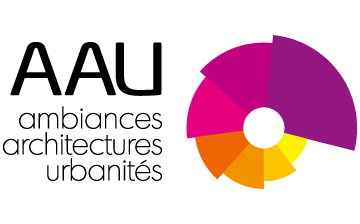AMaL – Machine Learning des ambiances, Morphologie solaire
AMaL - Ambiances Machine Learning, Solar morphology
Financement : Initiatives de Recherche à Grenoble Alpes (IRGA) - Pack IA – soutenu par MIAI@Grenoble Alpes, (ANR-19-P3IA-0003)
Responsable(s) scientifique : Abdelkader Ben Saci (AAU-CRESSON)
Contrat de recherche débuté en novembre 2022
FR
Equipe :
- AAU-CRESSON : Abdelkader Ben Saci (MCF), Cédric Pichat (IE), Post-Doctorant (recrutement).
- Laboratoire Informatique de Grenoble, équipe STEAMER (Spatio-temporal information systems) : Danielle Ziebelin.
- Laboratoire Informatique de Grenoble, équipe APTIKAL (Algorithms, Principles and TheorIes for collaborative Knowledge acquisition And Learning) : Patrick Reignier, Gilles Bisson.
Ce projet explore la convergence de 3 enjeux majeurs actuels : la transition numérique du bâtiment, la transition environnementale et la démocratisation des sciences des données en vue de diminuer l’impact environnemental de l’architecture et améliorer le bien-être des habitants. Il repose sur la conjonction du design bioclimatique du bâtiment et du machine learning (ML) pour surmonter la complexité de l’acte de donner forme et augmenter la performance des bâtiments.
L’approche déductive basée sur une formalisation préalable des prédicats de la conception architecturale a montré ses limites. Les modèles paramétriques et les algorithmes génétiques multi objectifs n’arrivent pas à gérer totalement la complexité de l’architecture. L’approche ML offre une nouvelle perspective d’inférer des solutions à partir des informations engrammées dans les données. C’est pourquoi ce projet propose d’explorer cette piste de recherche inductive faisant appel à la science des données. A partir d’une description morpho-énergétique des bâtiments, il élabore une classification, détermine des indicateurs, puis il explore l’apprentissage automatique de la morphologie des bâtiments à partir d’un corpus de bâtiments et des features.
L’approche multidisciplinaire entre chercheurs en intelligence artificielle et ambiances architecturales et urbaines offre ici une opportunité d’ouvrir une piste de recherche inédite, innovante et fructueuse qui porte sur l’application de l’IA à la morphologie de l’architecture en interaction avec le climat.
EN
This project explores the convergency of 3 major current issues: the digital transition of the building, the environmental transition, and the democratization of data sciences in order to reduce the environmental impact of architecture and improve the well-being of inhabitants. It relies on the conjunction of the building bioclimatic design and machine learning (ML) in order to overcome the complexity of the shaping act and increase the performance of buildings.
The deductive approach based on a prior formalization of architectural design predicates has shown its limits. The parametric models and multi-objective genetic algorithms are not able to fully handle the complexity of architecture. The ML approach offers a new perspective of inferring solutions from the information engramed in the data. That is why this project proposes to explore this inductive research approach using data science. From a morpho-energetic description of buildings, it develops a classification, determines indicators, and then explores the automatic learning of building morphology from a corpus of buildings and features.
The multidisciplinary approach between researchers in artificial intelligence, and architectural and urban ambiances offers here an opportunity to open a new, innovative, and fruitful research track which focuses on the AI applied to the morphology of architecture in interaction with the climate.
Retrouvez tous les contrats de recherche de l'équipe CRESSON
